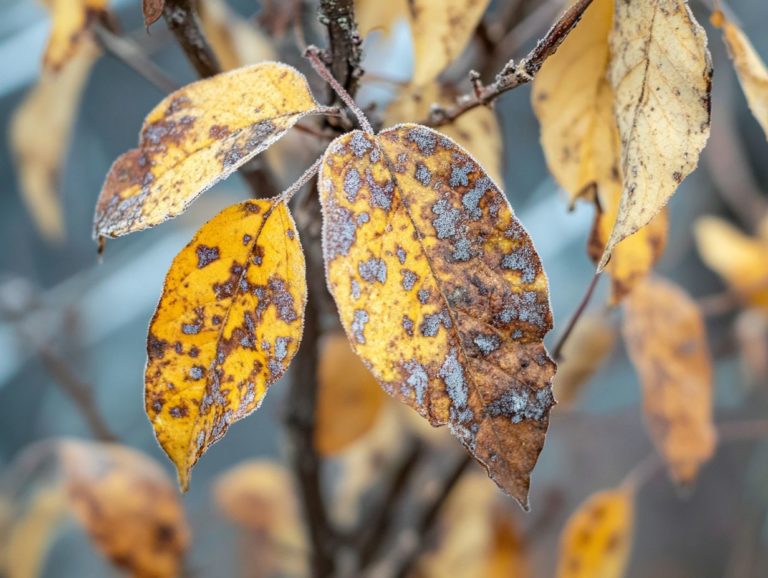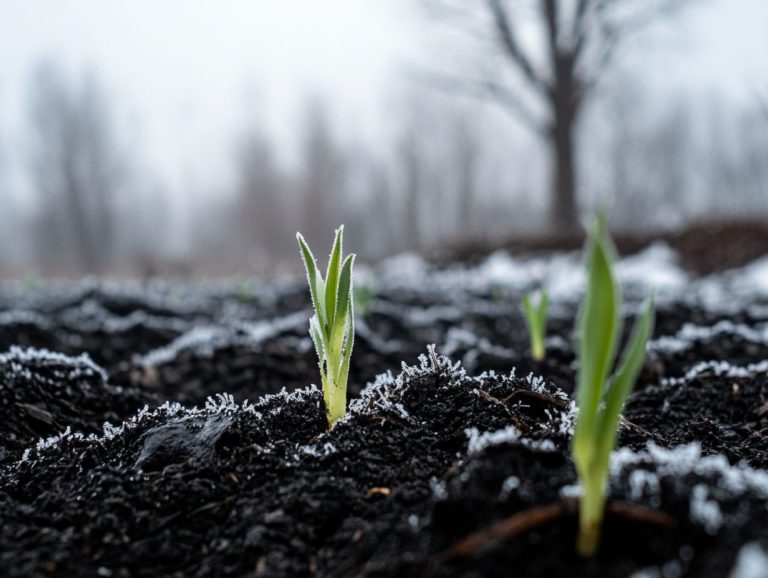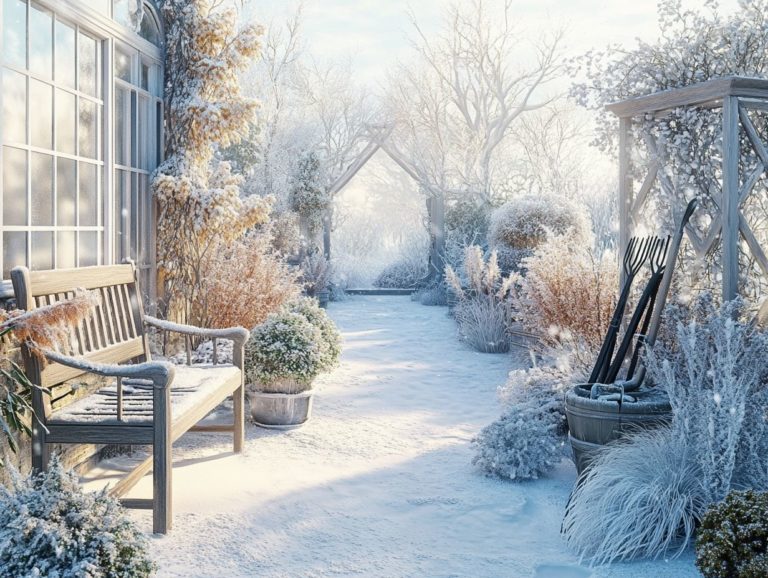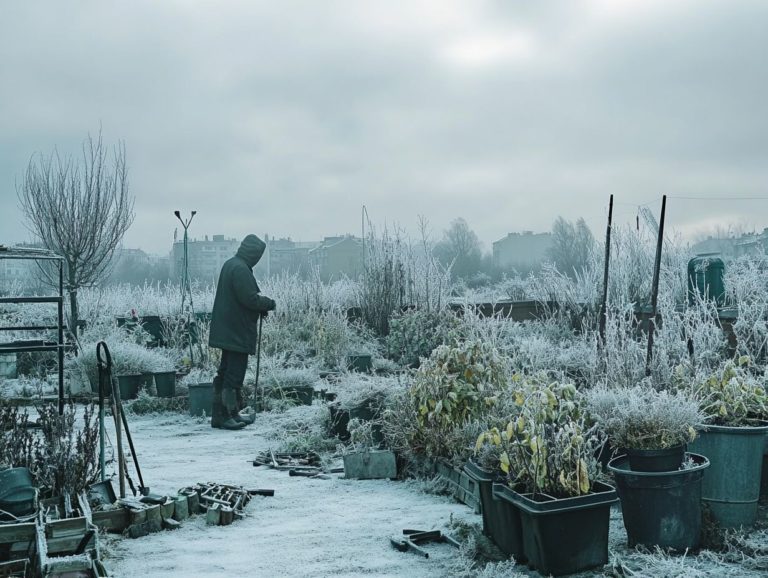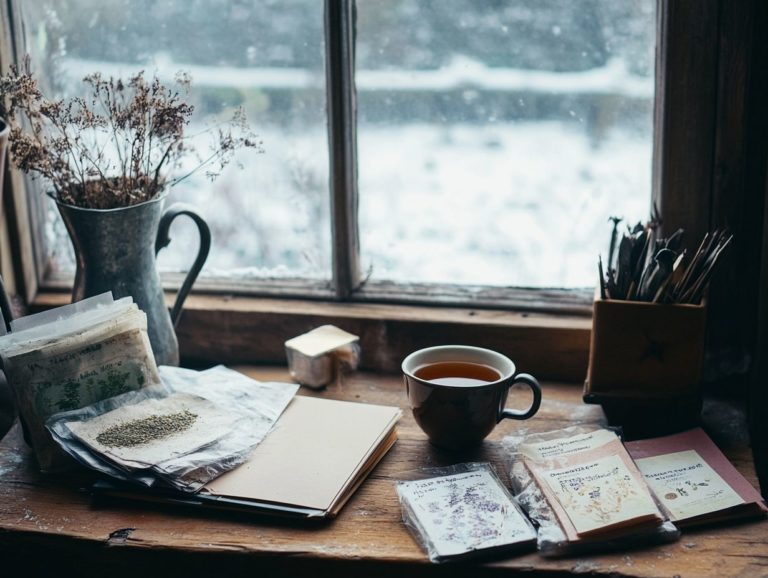Understanding Winter Pollinators
Winter might seem like nature’s downtime, but it s actually a vital season for the brave pollinators that face the chill head-on. While many envision bees and butterflies as the stars of summer, it s important to recognize that numerous species continue their essential contributions during these colder months.
This article delves into the captivating realm of winter pollinators, showcasing the insects, birds, and mammals that thrive in frosty conditions and highlighting their crucial roles in our ecosystems and agriculture.
You ll also discover the threats these unsung heroes encounter and learn how you can support them in their tireless efforts.
Contents
Key Takeaways:
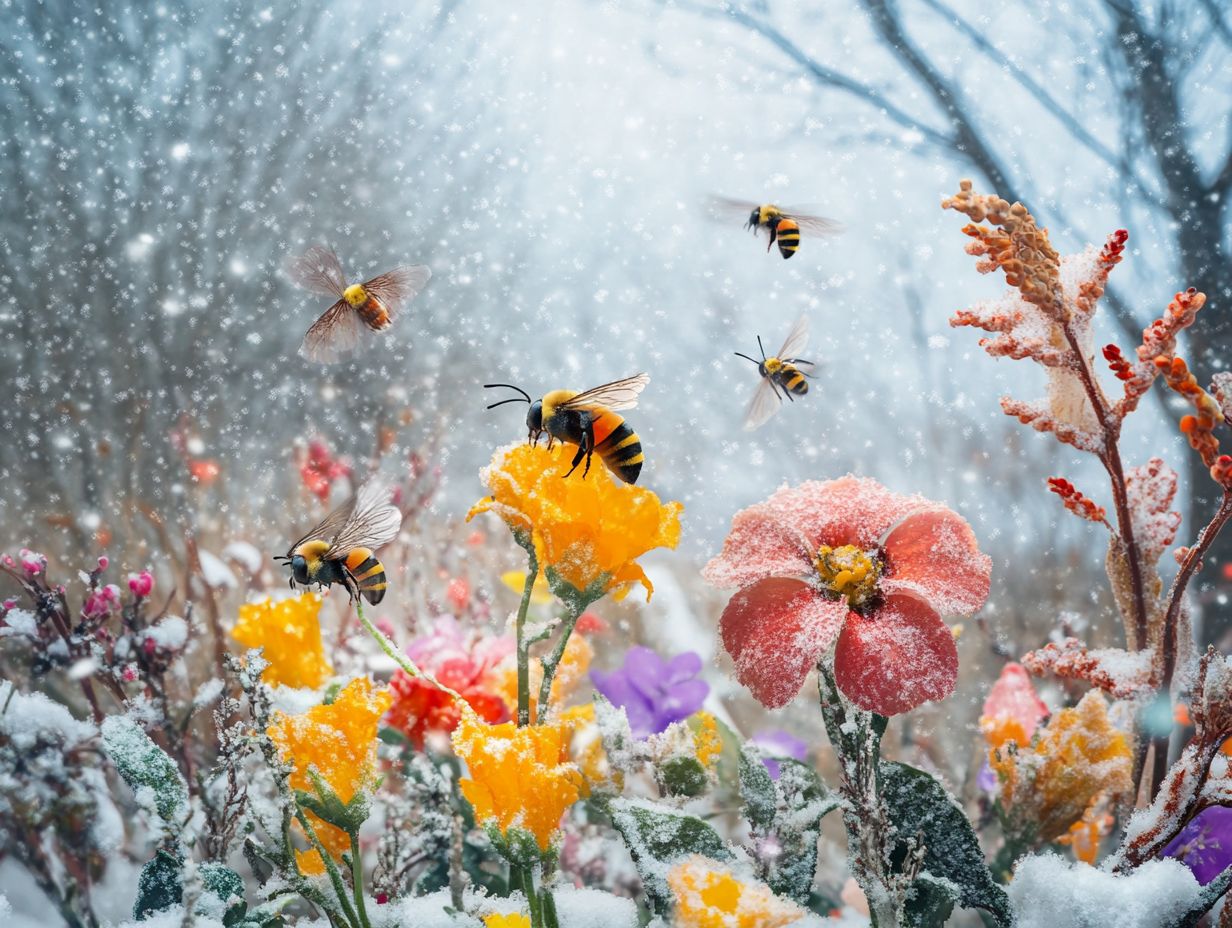
- Winter pollinators play a crucial role in maintaining ecological balance and supporting agriculture during colder months.
- Insects, birds, and mammals are important types of winter pollinators that benefit the environment in different ways.
- To support winter pollinators, individuals can create winter-friendly habitats and plant pollinator-friendly plants in their gardens or local communities.
What are Winter Pollinators?
Winter pollinators, including a variety of bees, butterflies, and other insects, are essential to maintaining the health of ecosystems during the colder months. As temperatures decrease and landscapes change, these resilient pollinators enter a period of inactivity, employing clever strategies for surviving the winter that ensure their survival.
They seek refuge in natural habitats, such as gardens brimming with native plants, where they can access crucial resources like food and warmth. This underscores their significance in the pollination process, even in the heart of winter.
Types of Winter Pollinators
The winter pollinator landscape is rich and varied, featuring a range of insects like bees and butterflies, as well as mammals. Each plays a vital role in their ecosystems.
You ll find that these pollinators have developed unique adaptations that enable them to flourish in colder climates. Their contributions to the process of pollination remain essential, even when temperatures take a nosedive.
Insects
Insects, particularly bees and butterflies, are among the most remarkable winter pollinators, showcasing exceptional resilience in the face of harsh conditions. You might find bumblebees and certain butterfly species employing various strategies to find shelter and sustain themselves. They play a crucial role in the health of ecosystems even during winter.
For instance, bumblebees enter a state of hibernation when the temperatures drop, seeking refuge in leaf litter or underground burrows to escape the cold. Their ability to lower their metabolic rates allows them to survive until the first blooms of spring arrive.
Several butterfly species also migrate long distances to warmer climates, undertaking a perilous journey that significantly alters their habitats. These insects not only ensure the survival of their species but also provide invaluable services to pollination, impacting the growth of plants that countless other organisms rely on for food. In doing so, they help maintain a delicate balance in their ecosystems.
Birds
You might not think of birds as winter pollinators, but they play a crucial role in various ecosystems during the colder months. Certain species, including migratory ones, contribute to pollination and seed dispersal, ensuring that native plants can endure even the toughest winter conditions.
Take hummingbirds, for example. They possess a remarkable ability to visit winter-blooming flowers like specific species of sage and camellia, sipping nectar while unwittingly transferring pollen in the process. Similarly, you ll find waxwings and some sparrows feasting on winter berries and blossoms, inadvertently supporting plant reproduction.
These interactions create a magical synergy that boosts biodiversity by promoting the growth of essential flora for a variety of wildlife. Such avian activities foster a balanced ecosystem, enriching the environment even amidst the harshness of winter.
Mammals
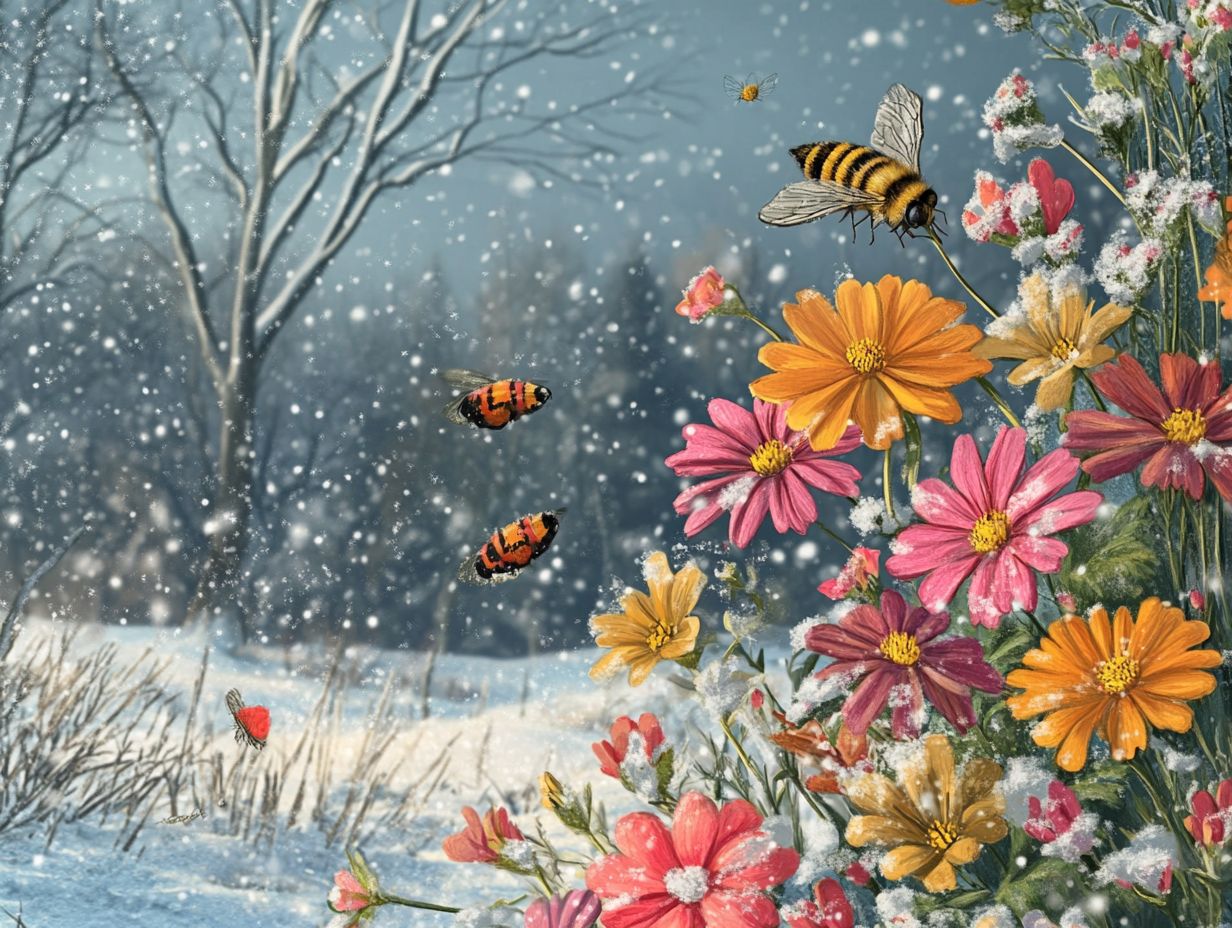
Mammals play a vital role in winter pollination. Certain species actively contribute to the pollination of winter blooms, helping maintain ecological balance and supporting the growth of native flora.
As the colder months roll in, a variety of mammals think bats, shrews, and even some rodents seek out these resilient plants. Their foraging habits lead to unintentional yet beneficial pollen transfer, essential for the reproductive cycles of winter-flowering plants like witch hazel and snowdrop.
While hunting for nourishment, these mammals gather and spread pollen as they flit from bloom to bloom. This relationship underscores a fascinating interdependence: as they assist in pollination, the plants offer critical food sources, forming a symbiotic bond, where both parties benefit, crucial for ecological health during harsh seasons.
Importance of Winter Pollinators
The significance of winter pollinators cannot be overstated. They play vital ecological roles that bolster both biodiversity and agricultural systems.
By helping the pollination of winter-blooming plants, these remarkable creatures contribute to the overall health of ecosystems. They support native species and enhance food security through crucial agricultural pollination.
Ecological Role
Winter pollinators are essential for maintaining biodiversity and the health of ecosystems. They ensure the survival of various plant species by helping pollinate during the colder months, which supports food webs and wildlife habitats.
These remarkable creatures play a crucial role in fertilizing winter-blooming flowers, which produce seeds for future generations. Without their contributions, many plants would struggle to reproduce, risking floral diversity and the species that depend on them.
The relationship between winter pollinators and native flora exemplifies the delicate balance within ecosystems. The absence of one can significantly impact the other. By sustaining plant reproduction, they bolster plant communities and enhance overall ecosystem resilience, securing balanced habitats for various species that rely on them.
Impact on Agriculture
The impact of winter pollinators on agriculture is substantial. They play an essential role in pollinating crops and ensuring food security, even in colder climates.
Winter crops like winter rapeseed and specific varieties of fruit trees rely heavily on these dedicated pollinators to thrive. Recognizing their vital contributions helps foster a resilient ecosystem that benefits everyone.
To protect these crucial creatures, consider implementing habitat restoration techniques. Planting cover crops and maintaining wildflower patches provide essential forage. Reducing pesticide use during winter can further enhance their health, ultimately benefiting the agricultural landscape and promoting biodiversity.
Threats to Winter Pollinators
Winter pollinators face various threats that endanger their survival, ultimately impacting the ecosystems they sustain.
The most significant challenges include climate change, which disrupts their habitats and life cycles, and habitat loss from urban development and agricultural expansion.
Protecting winter pollinators is critical for maintaining healthy ecosystems. Take action by supporting conservation efforts and promoting awareness about their importance.
Climate Change
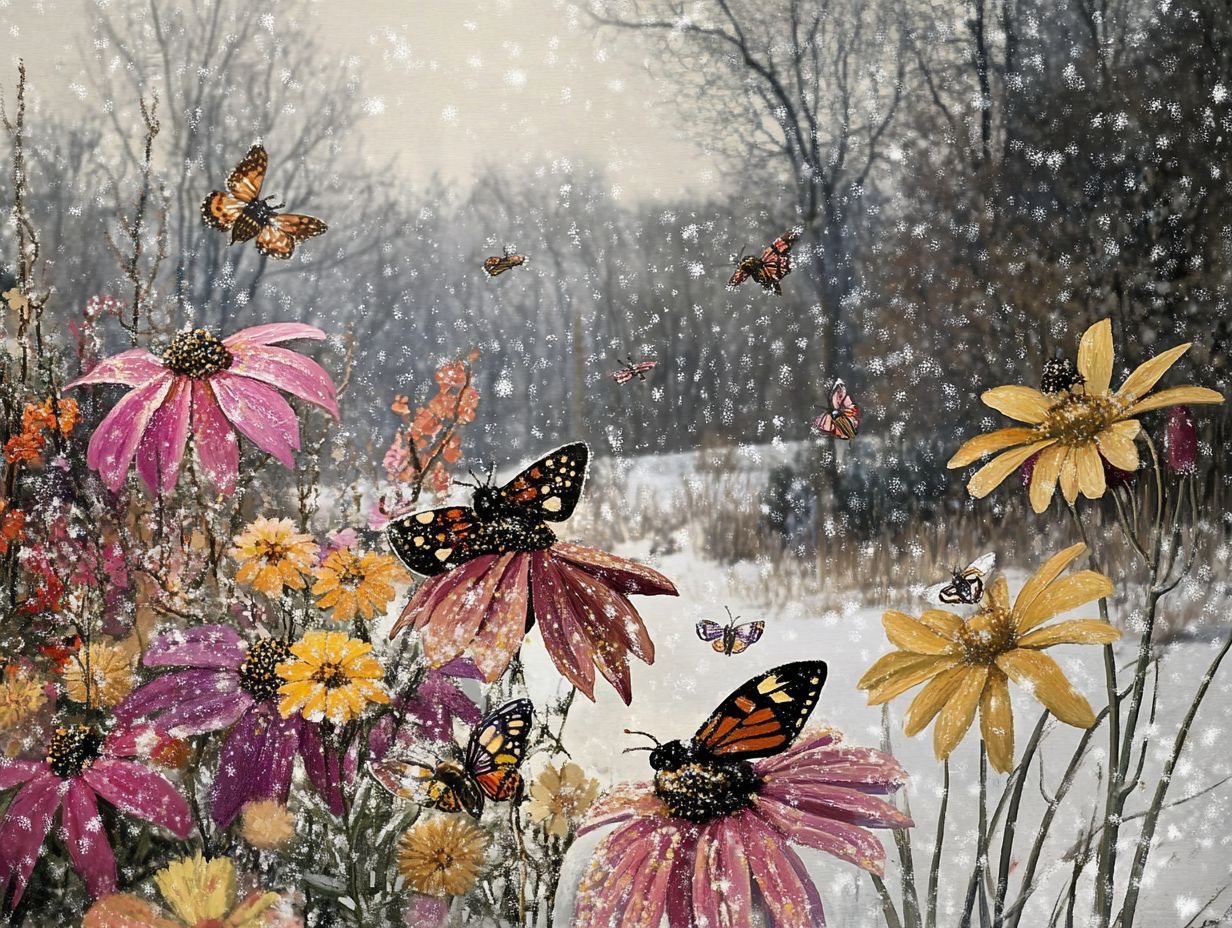
Climate change presents a serious challenge to winter pollinators. Rising temperatures can disrupt their natural life cycles and habitats.
With shifting climate conditions, you may notice a mismatch between pollinators and the timing of flower blooms. This can significantly reduce their effectiveness and survival rates.
As winter temperatures warm, many species might emerge from hibernation earlier than expected. This leads to a misalignment with the plants that have a lot of nectar that typically bloom later in the season.
This mismatch can result in dwindling food sources for bees, butterflies, and other essential pollinators that depend on specific plants for sustenance during their active periods.
Altered migration patterns can upset the ecosystem balance. Certain species may be pushed into unfamiliar territories where vital flora is either absent or scarce.
With these changing environmental conditions come new challenges, such as heightened competition for resources and increased vulnerability to diseases. This ultimately jeopardizes the very existence of these essential agents of biodiversity.
Habitat Loss
Habitat loss poses a significant threat to winter pollinators. Natural landscapes are increasingly supplanted by urban development and intensive agriculture.
This transformation leads to the destruction of essential habitats, making it challenging for pollinators to locate the shelter and food they need to thrive, including nectar resources.
When these vital ecosystems are compromised, the availability of native plants critical resources for winter pollinators diminishes dramatically.
As a result, populations of these essential insects decline, disrupting ecological balance and impacting other species that depend on similar natural environments, including butterflies and bees.
To address these losses, conservation strategies are being prioritized. Consider creating pollinator-friendly gardens and restoring native vegetation to support overwintering species.
You have the power to make a real difference by engaging in habitat restoration efforts, promoting sustainable agricultural practices, and raising awareness about the importance of maintaining biodiversity.
These proactive steps can ensure that winter pollinators have the necessary resources for survival, including the right food and shelter. They also contribute to the overall health of ecosystems.
Ways to Support Winter Pollinators
Supporting winter pollinators is crucial for sustaining healthy ecosystems. There are several strategies you can adopt to create winter-friendly habitats.
By planting pollinator-friendly plants and offering shelter, you can play an important role in ensuring the survival of these vital species throughout the colder months.
Your efforts can make a meaningful difference in fostering biodiversity during winter s chill.
Creating Winter-Friendly Habitats
Creating winter-friendly habitats is essential for the survival of winter pollinators. These spaces offer crucial shelter and resources.
By incorporating native winter-blooming plants that bloom in winter, such as winter jasmine and winter honeysuckle, you can provide vital food sources and foster a supportive environment for pollinators seeking refuge.
To enhance the sustainability of these habitats, consider integrating sheltering elements. Features like brush piles, rock walls, and dense evergreen plants, as well as leaves and mulch, shield pollinators from harsh winter winds.
These create microclimates that provide a warmer haven when temperatures drop.
Selecting local flora that thrives in winter ensures a resilient habitat that benefits both pollinators and other wildlife, including caterpillars, eggs, and larvae.
By prioritizing native plants, such as Oregon grape and hazelnut, you can contribute to biodiversity. This encourages the natural balance that sustains these essential species throughout the colder months.
Planting Pollinator-Friendly Plants
Planting pollinator-friendly plants is one of the best strategies you can employ to support winter pollinators! These plants provide sweet liquid food and blooms during the colder months, playing a vital role in your local ecosystem.
By choosing the right types of plants, including winter-flowering heathers, you can attract a variety of pollinators and contribute to a healthier environment. In the chill of winter, consider hellebores, witch hazel, and specific types of winter-flowering heathers they emerge as true champions.
These plants not only offer vital resources when most others are dormant but also serve as crucial food sources for bees and other pollinators just waking from their slumber, including monarch butterflies.
Integrating these plants into your garden enhances its aesthetic appeal while fulfilling an important ecological role. By creating clusters of these plants in sunny, sheltered spots and using soil enriched by pruning, you can maximize their benefits.
This approach attracts a diverse array of pollinators and fosters a vibrant garden ecosystem that flourishes even in winter, providing warmth and energy for wildlife!
Frequently Asked Questions

What exactly are winter pollinators?
Winter pollinators are insects, birds, and other animals active during the winter months that help pollinate plants.
Why is understanding winter pollinators important?
Understanding winter pollinators is essential because they play a crucial role in maintaining the health and biodiversity of ecosystems and support agriculture and food production.
What types of animals are considered winter pollinators?
Snow bumblebees, winter moths, honeybees, and certain bird species like hummingbirds and chickadees are considered winter pollinators.
How do winter pollinators survive the cold weather?
Winter pollinators have various adaptations that help them survive the cold, such as hibernation, migration, and specialized body structures that conserve heat and energy.
What are some plants that rely on winter pollinators?
Examples of plants that rely on winter pollinators for pollination and reproduction include winter-blooming heather, witch hazel, and winter honeysuckle.
How can I attract winter pollinators to my garden?
You can attract winter pollinators by planting winter-blooming plants, providing shelter and food sources, and avoiding pesticides and chemicals that can harm them.
Ready to make your garden a winter haven for pollinators? Start planting today!

